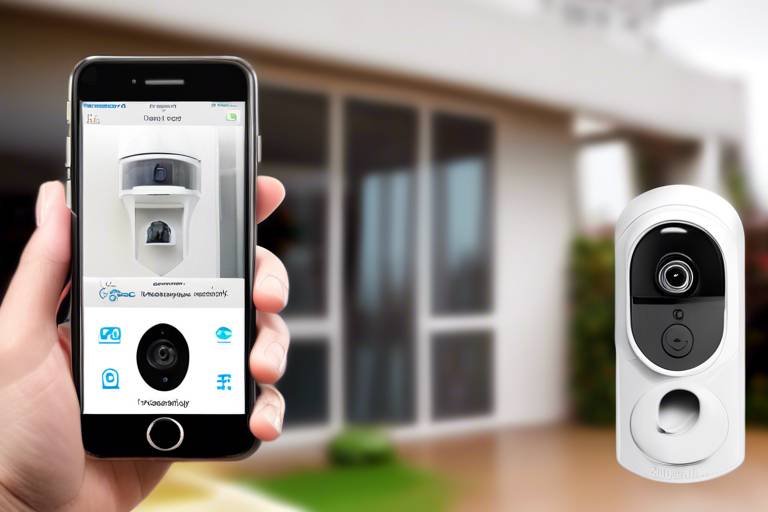How Autonomous Drones are Changing Logistics
The logistics industry is undergoing a remarkable transformation, and at the heart of this revolution are autonomous drones. These flying marvels are not just a futuristic concept; they are becoming a practical reality that is reshaping how goods are transported around the globe. Imagine a world where packages can be delivered to your doorstep in mere minutes, bypassing the congestion of traditional delivery methods. This is not just a dream—it's happening right now, and it's all thanks to the advancements in drone technology.
As we delve deeper into the impact of autonomous drones on logistics, we will explore their efficiency, cost-effectiveness, and the potential they hold to revolutionize delivery systems worldwide. From reducing transit times to minimizing human error, drones are proving to be a game-changer in the logistics landscape. But what exactly led to this rise? Let’s take a closer look at the factors driving the adoption of these high-flying delivery systems.
Autonomous drones are rapidly emerging as game-changers in logistics, driven by advancements in technology and increasing demand for faster delivery solutions. The evolution of drone technology has been nothing short of astounding. Initially, drones were primarily used for military applications or recreational purposes. However, with the advent of sophisticated navigation systems, improved battery life, and enhanced payload capacities, drones have found their way into commercial applications, particularly in logistics.
Today, companies across various sectors, including retail, healthcare, and e-commerce, are embracing drone technology to meet the ever-increasing consumer demand for speed and efficiency. The ability to deliver products directly to consumers' homes or to remote locations has opened up new avenues for businesses. As we look towards the future, it is clear that the integration of drones into logistics is not just a trend; it is a fundamental shift in how we think about delivery.
Drones significantly enhance delivery efficiency by reducing transit times and minimizing human error. Imagine a scenario where a package is ordered online and, instead of waiting days for it to arrive, it is delivered within hours. This is the reality that drones are creating. By leveraging advanced algorithms and real-time data, drones can navigate the most efficient routes, avoiding traffic and other obstacles that typically delay traditional delivery methods.
Moreover, the automation of delivery processes means that businesses can operate with fewer human resources, allowing employees to focus on more critical tasks. This shift not only streamlines operations but also leads to quicker and more reliable service for businesses and consumers alike. With drones handling the heavy lifting, companies can scale their operations without the proportional increase in costs.
Implementing autonomous drones can lead to substantial cost savings in logistics. Companies are always on the lookout for ways to cut costs, and drones offer a unique solution. By reducing labor costs, fuel expenses, and overall operational overhead, businesses can enhance their profit margins significantly. For instance, consider the traditional delivery model, which often involves a fleet of vehicles, drivers, maintenance, and fuel costs. In contrast, a drone can deliver packages without the need for a driver, and its energy consumption is often lower than that of a delivery truck.
| Cost Factors | Traditional Delivery | Drone Delivery |
|---|---|---|
| Labor Costs | High | Low |
| Fuel Expenses | High | Low |
| Maintenance | High | Minimal |
When comparing the cost-effectiveness of drone deliveries with traditional methods like trucks and vans, the advantages become clear. Drones can operate in a wider range of environments and can access areas that may be difficult for vehicles. Additionally, they often require less infrastructure, meaning that businesses can save on logistics costs associated with warehousing and transportation.
Understanding the long-term financial benefits of integrating drones into logistics is crucial. Companies that invest in drone technology today are positioning themselves for sustained growth in the future. With the potential for significant returns on investment, businesses can leverage drones to not only enhance their delivery capabilities but also to stay ahead of the competition. It’s an investment in efficiency, speed, and customer satisfaction that is likely to pay off in spades.
Despite their advantages, autonomous drones face regulatory hurdles that can hinder their deployment. Current regulations often lag behind technological advancements, creating a complex landscape for businesses looking to adopt drone technology. However, there are potential solutions that can facilitate smoother integration into the logistics landscape. Collaboration between industry stakeholders and regulatory bodies can lead to the development of guidelines that ensure safety while promoting innovation.
The integration of drones into the supply chain can optimize inventory management and distribution processes. Drones enhance visibility and efficiency throughout the supply chain, allowing businesses to track shipments in real-time. This capability not only improves operational efficiency but also enhances customer satisfaction by providing accurate delivery estimates.
Last-mile delivery is often the most challenging aspect of logistics. Drones provide innovative solutions to improve last-mile delivery speed and reliability for businesses. By bypassing traditional road networks, drones can deliver packages directly to customers' homes, reducing the time and costs associated with final delivery.
As technology continues to evolve, the future of drone logistics looks promising. Emerging trends such as AI integration, enhanced battery technology, and increased payload capacities will further revolutionize the logistics industry in the coming years. The potential for drones to work in tandem with other technologies, such as autonomous vehicles and smart warehouses, will create a seamless logistics ecosystem that enhances efficiency and customer satisfaction.
- What are autonomous drones? Autonomous drones are unmanned aerial vehicles that can operate without human intervention, often used for delivery and logistics purposes.
- How do drones improve delivery efficiency? Drones reduce transit times and minimize human error by utilizing advanced navigation systems and real-time data.
- What are the cost benefits of using drones in logistics? Drones can significantly lower labor costs, fuel expenses, and operational overhead, leading to improved profit margins.
- What challenges do drones face in logistics? Regulatory hurdles and safety concerns can hinder the widespread adoption of drones in logistics.
- What does the future hold for drone logistics? The future looks promising with trends like AI integration and enhanced battery technology set to revolutionize the industry.
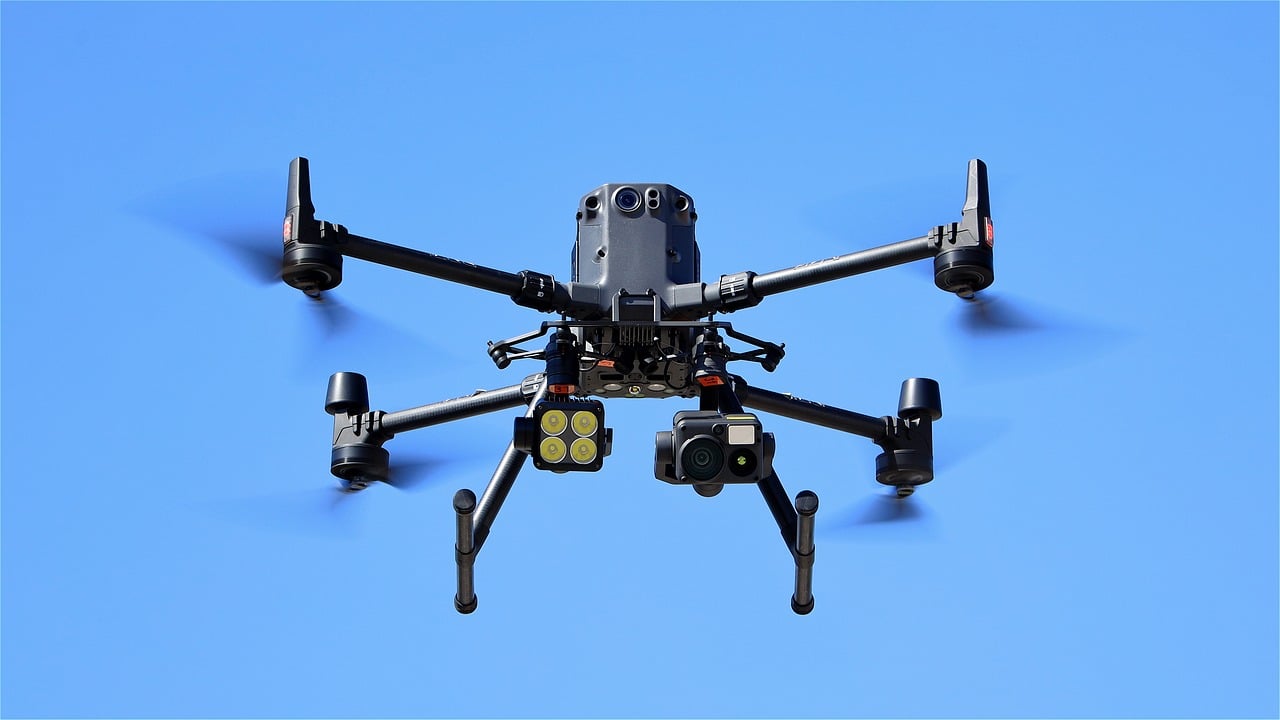
The Rise of Autonomous Drones
Autonomous drones are rapidly emerging as game-changers in logistics, driven by advancements in technology and increasing demand for faster delivery solutions. These flying marvels have evolved from simple remote-controlled gadgets into sophisticated machines capable of navigating complex environments with minimal human intervention. The journey of drones in logistics has been nothing short of remarkable, and their growing adoption across various sectors is a testament to their potential.
In the early days, drones were primarily used for recreational purposes and aerial photography. However, as technology advanced, businesses began to recognize their potential for logistics and delivery. Today, companies across industries—from e-commerce to healthcare—are leveraging drones to enhance their operational efficiency. But what exactly has fueled this rise? Let's break it down:
- Technological Advancements: The development of GPS, sensors, and AI has made drones more reliable and efficient than ever.
- Consumer Demand: With the rise of online shopping, customers expect quick delivery times, pushing businesses to explore innovative solutions.
- Cost-Effectiveness: Drones offer a way to reduce delivery costs and improve margins, making them an attractive option for companies.
As we look at the logistics landscape, it's clear that the integration of autonomous drones is not just a fleeting trend; it's a paradigm shift. Companies are investing heavily in drone technology, and pilot programs are popping up worldwide. For instance, some retailers are experimenting with drone deliveries in urban areas, while pharmaceutical companies are using drones to transport medical supplies to remote locations.
Moreover, the environmental impact of using drones cannot be overlooked. Drones are generally more energy-efficient than traditional delivery vehicles, which often rely on fossil fuels. By utilizing electric-powered drones, companies can significantly reduce their carbon footprint. This shift towards sustainability is not only beneficial for the planet but also resonates with consumers who are increasingly prioritizing eco-friendly practices.
However, the rise of autonomous drones is not without its challenges. Regulatory frameworks are still catching up with the technology, and safety concerns must be addressed to ensure public acceptance. As companies navigate these hurdles, the potential for drones to revolutionize logistics remains immense. The future looks bright, and as we continue to explore the possibilities, one thing is certain: autonomous drones are set to redefine how we think about delivery and logistics.

Efficiency in Delivery Operations
Imagine a world where your package arrives at your doorstep faster than you can say "shipping." Autonomous drones are making this dream a reality, transforming the logistics landscape with their remarkable efficiency. These flying marvels are not just a flashy gimmick; they represent a significant leap forward in how we think about delivery operations. With the ability to navigate through the air, drones bypass the notorious traffic jams and roadblocks that plague traditional delivery methods. This means that what once took hours can now be completed in mere minutes, allowing businesses to meet the ever-growing consumer demand for speed.
One of the most impressive aspects of drone delivery is their ability to minimize human error. Human factors like fatigue, distraction, and miscommunication can lead to costly mistakes in logistics. Drones, on the other hand, are programmed to follow precise routes and protocols, ensuring that packages are delivered accurately and on time. In fact, studies have shown that the error rate in drone deliveries is significantly lower than that of their human counterparts. This reliability not only enhances customer satisfaction but also strengthens the trust between businesses and their clients.
Furthermore, the integration of drones into delivery operations streamlines the entire process. By utilizing advanced GPS technology and real-time data analytics, drones can dynamically adjust their flight paths based on traffic conditions, weather changes, and other variables. This adaptability is crucial in maintaining efficiency, as it allows for optimal routing and delivery times. As a result, businesses can operate with greater agility, responding to customer needs swiftly and effectively.
Consider the following key benefits of using drones in delivery operations:
- Reduced Transit Times: Drones can cover distances up to 60 miles in a single flight, significantly cutting down delivery times.
- Increased Capacity: With the ability to carry multiple packages simultaneously, drones can handle higher volumes of deliveries without the need for additional vehicles.
- Lower Environmental Impact: Drones are typically electric and produce fewer emissions compared to traditional delivery trucks, contributing to a greener logistics solution.
To further illustrate the impact of drones on delivery efficiency, consider the following comparison:
| Delivery Method | Average Delivery Time | Cost per Delivery | Environmental Impact |
|---|---|---|---|
| Traditional Truck | 1-3 hours | $10-$20 | High |
| Autonomous Drone | 30 minutes | $5-$10 | Low |
This table clearly shows that autonomous drones not only reduce delivery times but also lower costs and environmental impact. As businesses look for ways to remain competitive, adopting drone technology becomes less of an option and more of a necessity. The efficiency gains are simply too significant to ignore.
In conclusion, the integration of autonomous drones into delivery operations is reshaping the logistics industry. By enhancing speed, accuracy, and sustainability, drones are paving the way for a future where delivery is not just about getting packages from point A to point B, but about doing so in the most efficient manner possible. As we continue to embrace this technology, the possibilities for improved logistics operations are limitless.
Q: How do drones navigate during delivery?
A: Drones utilize GPS technology and real-time data analytics to navigate efficiently, adjusting their flight paths based on current conditions.
Q: Are drone deliveries safe?
A: Yes, drones are designed with safety features, including obstacle avoidance systems, and they operate under strict regulations to ensure safe deliveries.
Q: What types of packages can drones deliver?
A: Drones can deliver a variety of packages, including medical supplies, food, and consumer goods, as long as they are within the weight limits set by regulations.
Q: How are drones impacting traditional delivery jobs?
A: While drones may reduce the need for some delivery drivers, they also create new job opportunities in drone maintenance, operation, and logistics planning.

Cost Reduction Benefits
When it comes to logistics, cost efficiency is the name of the game, and autonomous drones are stepping up to the plate like champions. Imagine a world where delivery costs plummet, fuel expenses shrink, and labor overheads are slashed. Sounds like a dream, right? Well, with the integration of drone technology, this dream is quickly becoming a reality. Companies are discovering that by utilizing drones for their delivery operations, they can significantly reduce their overall expenses while maintaining high service quality.
One of the most remarkable aspects of using autonomous drones is their ability to eliminate human error. Traditional delivery methods often rely on human drivers who may face fatigue, distractions, or even traffic jams, leading to delays and increased costs. Drones, on the other hand, operate on precise algorithms and GPS technology, ensuring that deliveries are made on time, every time. This reliability not only enhances customer satisfaction but also minimizes the need for costly compensations due to delivery failures.
Furthermore, let’s talk about the operational overhead. Maintaining a fleet of delivery vehicles involves a myriad of expenses, including insurance, maintenance, and fuel costs. Drones, by contrast, require significantly less maintenance and can operate on electric power, which is generally cheaper than gasoline. To put things into perspective, consider the following table that outlines the typical costs associated with traditional delivery methods versus drone delivery:
| Cost Factor | Traditional Delivery | Drone Delivery |
|---|---|---|
| Fuel Costs (per mile) | $0.50 | $0.10 |
| Driver Salaries (annual) | $40,000 | $0 (no drivers needed) |
| Maintenance Costs (annual) | $10,000 | $1,000 |
| Insurance Costs (annual) | $5,000 | $500 |
As you can see, the savings are not just a drop in the bucket; they can amount to thousands of dollars annually. Additionally, the scalability of drone operations allows businesses to expand their delivery capabilities without the proportional rise in costs associated with hiring more staff or acquiring more vehicles. With drones, scaling up means simply deploying more units, which can be done with minimal additional investment.
Another significant aspect to consider is the environmental impact. Drones are generally more eco-friendly than traditional delivery vehicles, which is a growing concern for many companies today. By reducing fuel consumption and emissions, businesses not only save money but also enhance their brand image as environmentally responsible entities. This can lead to increased customer loyalty and potentially even higher sales, as consumers are increasingly making purchasing decisions based on sustainability.
In conclusion, the integration of autonomous drones into logistics presents a compelling case for cost reduction. From minimizing labor and fuel costs to enhancing operational efficiency, the financial benefits are clear. Companies that embrace this technology stand to gain a competitive edge, making it not just a smart move, but a necessary one in today's fast-paced market.
- How much can companies save by using drones for deliveries?
Companies can save thousands of dollars annually by reducing fuel, labor, and maintenance costs associated with traditional delivery methods. - Are drones safe for delivering packages?
Yes, drones are equipped with advanced navigation and safety features, making them a reliable option for deliveries. - What kinds of packages can drones deliver?
Drones can deliver a wide range of packages, from small parcels to medical supplies, depending on their payload capacity. - How do drones impact the environment?
Drones are generally more eco-friendly than traditional delivery vehicles, as they consume less fuel and produce fewer emissions.

Comparison with Traditional Delivery Methods
When we think about logistics, traditional delivery methods often conjure images of trucks and vans bustling along highways, laden with packages destined for homes and businesses. However, the emergence of autonomous drones is reshaping this landscape in ways we could only dream of a few years ago. So, how do these flying marvels stack up against their ground-based counterparts? Let’s dive into the details.
One of the most striking distinctions between drones and traditional delivery methods is speed. Drones can zip through the air, bypassing traffic and road conditions that can delay ground deliveries. For instance, while a delivery truck might take over an hour to navigate through city congestion, a drone can make the same trip in a fraction of the time. This speed not only enhances customer satisfaction but also allows businesses to fulfill orders more rapidly, giving them a competitive edge.
Next, let’s talk about cost-effectiveness. While the initial investment in drone technology may seem daunting, the long-term savings are hard to ignore. Drones eliminate the need for fuel costs associated with trucks and reduce labor expenses since fewer personnel are needed for deliveries. According to recent studies, companies can save up to 30% on delivery costs by integrating drone technology into their logistics operations. Here's a quick comparison:
| Delivery Method | Average Cost per Delivery | Delivery Speed | Labor Requirement |
|---|---|---|---|
| Traditional (Truck/Vans) | $10 - $20 | 1 - 3 hours | High |
| Autonomous Drones | $5 - $10 | 10 - 30 minutes | Low |
Moreover, drones excel in environmental sustainability. As the world increasingly prioritizes eco-friendly practices, drones present a greener alternative to traditional delivery methods. They typically consume less energy and produce fewer emissions compared to delivery trucks, aligning with global efforts to combat climate change. This is a significant advantage as consumers are becoming more conscious of their environmental impact and are likely to favor businesses that adopt sustainable practices.
However, it's essential to recognize that traditional delivery methods still hold advantages in certain scenarios. For example, large shipments or deliveries requiring specific handling may not be suitable for drones. Additionally, there are limitations regarding the weight and size of packages that drones can carry. Despite these challenges, the overall trend indicates a shift towards integrating drones into the logistics sector, particularly for last-mile deliveries, where speed and efficiency are paramount.
In conclusion, while traditional delivery methods have served us well for decades, the rise of autonomous drones introduces a new era of logistics that emphasizes speed, cost savings, and sustainability. The question remains: are we ready to embrace this transformation? As technology continues to evolve, the logistics industry will undoubtedly see a blend of both traditional and drone delivery methods, each complementing the other to create a more efficient and responsive system.
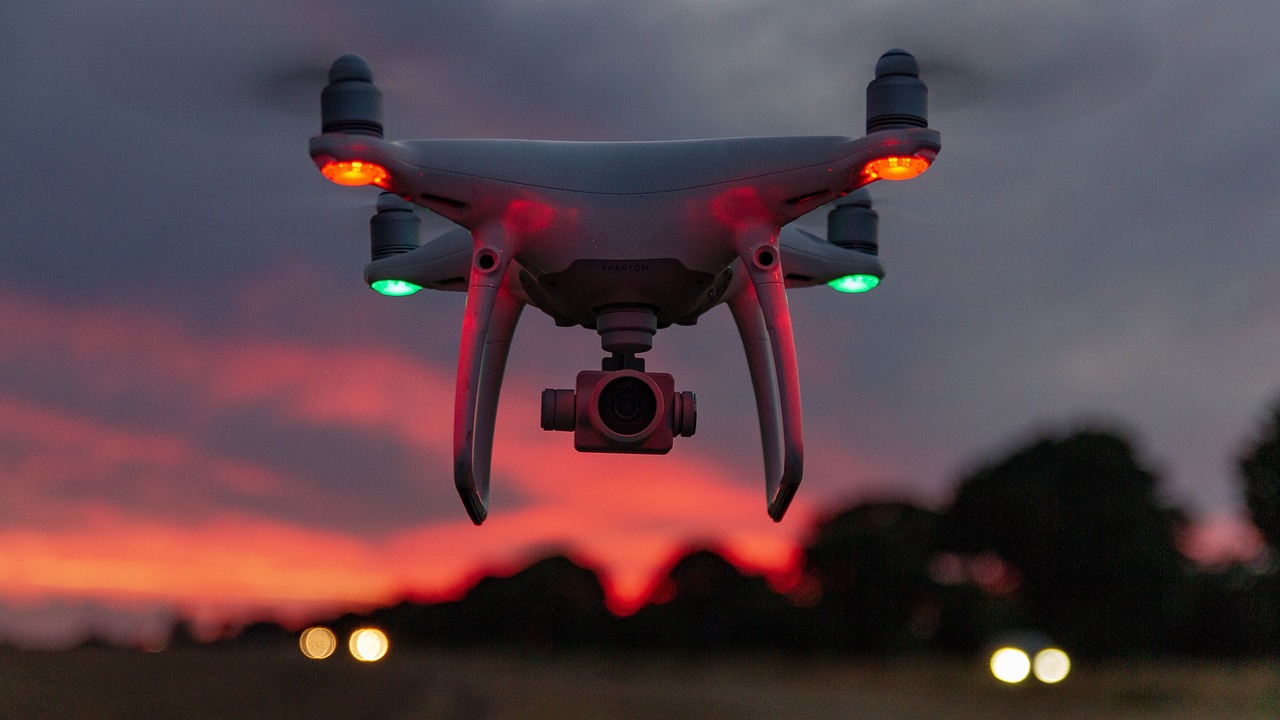
Long-term Financial Implications
When it comes to integrating autonomous drones into logistics, the long-term financial implications can be a game-changer for businesses. Imagine a future where operational costs are slashed, delivery times are halved, and customer satisfaction soars. This isn’t just wishful thinking; it's a reality that many companies are beginning to experience. By investing in drone technology, businesses can unlock significant savings and enhance their overall profitability.
One of the most compelling aspects of drone integration is the potential for return on investment (ROI). Companies that embrace this technology often see a rapid payback period. For instance, initial investments in drones might seem steep, but when you consider the long-term savings on labor, fuel, and maintenance costs, the numbers start to add up. A study by the Federal Aviation Administration (FAA) suggests that operational costs can be reduced by up to 30% when utilizing drones for delivery purposes.
To illustrate this point further, let’s take a look at a hypothetical scenario. Imagine a logistics company that currently relies on a fleet of delivery trucks. The costs associated with fuel, driver salaries, and vehicle maintenance can quickly escalate. By transitioning to drones, this company could potentially eliminate the need for a significant portion of its workforce, thereby reducing labor costs substantially. Additionally, drones consume less energy compared to traditional vehicles, which contributes to lower fuel expenses.
| Cost Category | Traditional Delivery (Trucks) | Drone Delivery |
|---|---|---|
| Labor Costs | $100,000/year | $30,000/year |
| Fuel Expenses | $50,000/year | $10,000/year |
| Maintenance | $20,000/year | $5,000/year |
| Total Annual Costs | $170,000 | $45,000 |
Furthermore, the scalability of drone operations presents another financial advantage. As demand grows, businesses can easily scale their drone fleet without the extensive overhead associated with expanding a traditional delivery network. This scalability means that companies can respond to market changes more swiftly and efficiently, ensuring they remain competitive in an ever-evolving landscape.
Lastly, it’s essential to consider the long-term implications of consumer behavior. As customers become accustomed to faster, more reliable delivery options, their expectations will rise. Companies that invest in drone technology now will be well-positioned to meet these expectations, ultimately leading to increased customer loyalty and repeat business. In a world where convenience is king, being ahead of the curve could be the difference between thriving and merely surviving.
In conclusion, the long-term financial implications of adopting autonomous drones in logistics are overwhelmingly positive. With significant cost reductions, enhanced scalability, and improved customer satisfaction, businesses that embrace this technology will likely find themselves reaping the rewards for years to come.
- What are the initial costs of implementing drone technology in logistics?
Initial costs can vary based on the type and number of drones purchased, but many companies see a return on investment within a few years due to reduced operational costs. - How do drones improve delivery efficiency?
Drones can bypass traffic, reach remote areas quickly, and operate in various weather conditions, significantly reducing delivery times. - Are there regulatory challenges to using drones in logistics?
Yes, regulations vary by region and can include restrictions on flight paths, altitude, and operational hours. However, many companies are working closely with regulatory bodies to navigate these challenges. - What is the future of drone logistics?
The future looks promising, with advancements in technology and increasing adoption expected to enhance efficiency and lower costs even further.
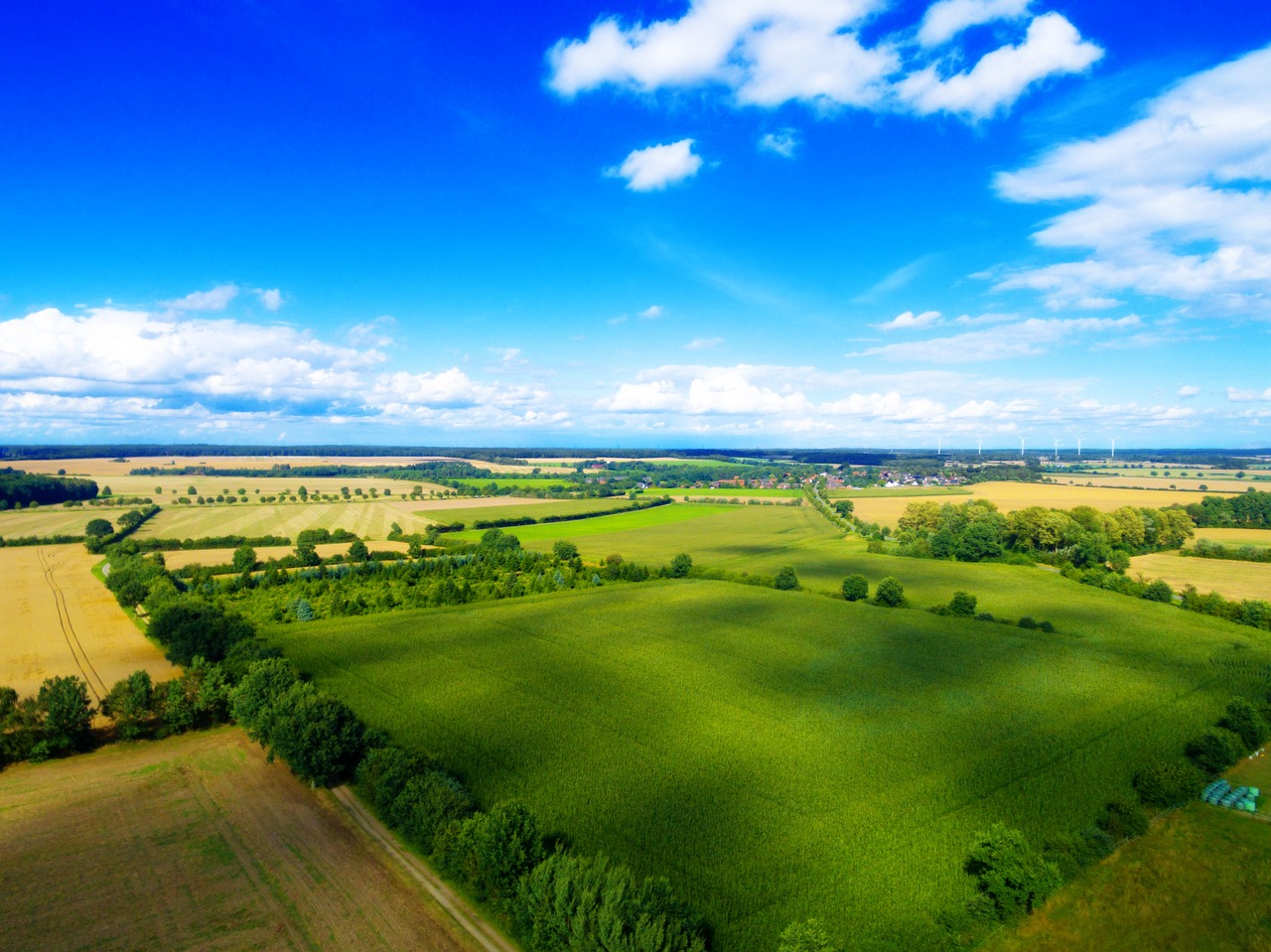
Regulatory Challenges and Solutions
The rise of autonomous drones in the logistics sector is nothing short of revolutionary, yet it doesn't come without its fair share of regulatory challenges. Governments worldwide are grappling with how to safely integrate drone technology into existing airspace systems. One of the primary concerns is safety. With more drones taking to the skies, the risk of mid-air collisions increases, necessitating stringent regulations to ensure public safety. Additionally, the potential for drones to invade privacy has raised alarms among citizens and lawmakers alike.
Another significant hurdle is the lack of standardization across different regions. Each country has its own set of rules governing drone operations, which can create confusion for logistics companies looking to expand their services internationally. For instance, what may be permissible in the U.S. could be entirely prohibited in Europe. This inconsistency complicates the planning and execution of drone delivery systems, making it challenging for businesses to scale their operations.
Moreover, air traffic management for drones is still in its infancy. Unlike traditional aircraft, drones operate at lower altitudes and can navigate through urban environments, which complicates the integration into existing air traffic systems. To address these challenges, regulatory bodies are working on developing frameworks that can accommodate the unique operational characteristics of drones. This includes creating designated drone corridors and implementing technologies that allow for real-time tracking and communication between drones and air traffic control.
To facilitate smoother integration, companies and regulators are exploring various solutions:
- Collaboration: Engaging with regulatory bodies early in the development process can help companies understand compliance requirements and influence policy-making.
- Technological Innovations: Implementing advanced technologies such as geo-fencing and automated traffic management systems can enhance safety and efficiency.
- Public Awareness: Educating the public about the benefits and safety measures associated with drone deliveries can alleviate concerns and foster acceptance.
In conclusion, while regulatory challenges pose significant barriers to the widespread adoption of autonomous drones in logistics, proactive measures and collaborative efforts between businesses and regulatory agencies can pave the way for a more seamless integration. The future of drone logistics hinges on finding the right balance between innovation and regulation, ensuring that safety and efficiency go hand in hand.
- What are the main regulatory challenges facing drone logistics? The primary challenges include safety concerns, lack of standardization across regions, and the need for effective air traffic management.
- How can companies address these regulatory challenges? Companies can engage with regulators, adopt advanced technologies, and promote public awareness to facilitate smoother integration.
- What role does public perception play in the adoption of drones? Public perception significantly influences regulatory decisions, making it essential for companies to educate the public about the benefits of drone technology.
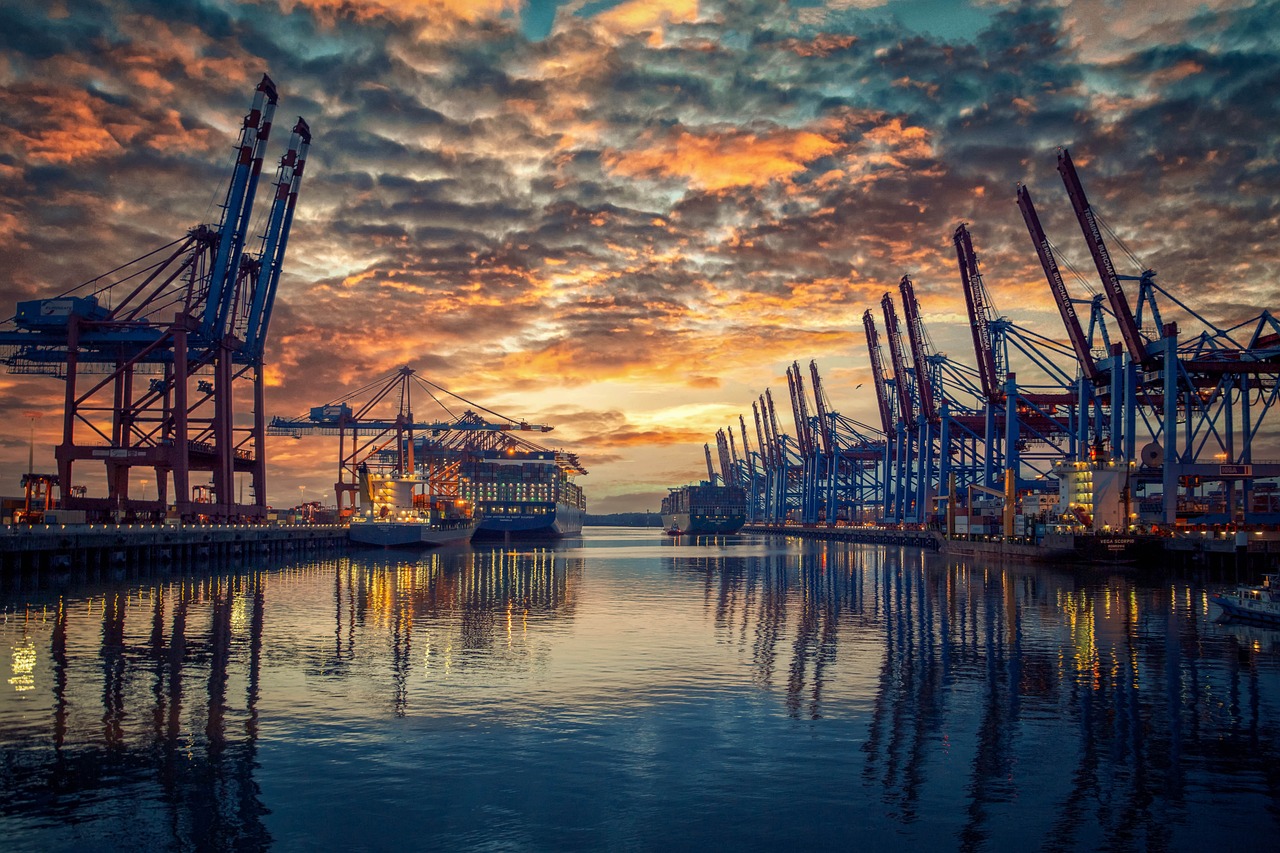
Impact on Supply Chain Management
In today's fast-paced world, the logistics landscape is undergoing a radical transformation, and at the heart of this shift are autonomous drones. These flying marvels are not just a futuristic concept; they are redefining how supply chains operate. Imagine a world where goods are delivered within minutes, rather than days. This is not just a dream—it's becoming a reality thanks to the integration of drones into supply chain management. By enhancing visibility and efficiency, drones are paving the way for a more streamlined, responsive, and agile logistics framework.
One of the most significant advantages of using drones in supply chain management is their ability to provide real-time data and insights. With the help of advanced sensors and GPS technology, drones can monitor inventory levels, track shipments, and even assess the condition of goods during transit. This level of visibility allows businesses to make informed decisions quickly, reducing the risk of stockouts or overstock situations. In fact, a study conducted by industry experts suggests that companies utilizing drone technology can improve their inventory accuracy by up to 30%.
Moreover, drones excel in optimizing distribution processes. Traditional logistics often involves multiple steps and handoffs, which can lead to delays and increased costs. Drones, however, can bypass many of these hurdles by flying directly to their destination. This capability is particularly beneficial for remote or hard-to-reach areas where conventional delivery methods may struggle. With drones, businesses can ensure faster delivery times, enhancing customer satisfaction and loyalty.
Let's take a closer look at how drones impact various aspects of supply chain management:
| Aspect | Traditional Methods | Drone Delivery |
|---|---|---|
| Delivery Speed | 1-3 Days | Minutes to Hours |
| Cost Efficiency | Higher due to labor and fuel | Lower operational costs |
| Accessibility | Limited in remote areas | Can reach remote locations easily |
| Inventory Management | Manual tracking | Automated, real-time tracking |
As we delve deeper, it’s essential to recognize the role of drones in last-mile delivery. This segment of logistics is often the most challenging, as it involves navigating urban environments and dealing with traffic congestion. Drones can fly over these obstacles, delivering packages directly to consumers' doorsteps. This not only speeds up the delivery process but also reduces the carbon footprint associated with traditional delivery vehicles, contributing to a more sustainable logistics model.
Looking ahead, the potential for drones in supply chain management seems limitless. As technology continues to advance, we can expect to see even more sophisticated applications, such as autonomous warehouses where drones handle inventory management and fulfillment processes. This integration could lead to a significant reduction in operational costs and an increase in overall efficiency.
In conclusion, the impact of autonomous drones on supply chain management is profound. They are not merely a tool for delivery; they are a catalyst for change, driving efficiency, reducing costs, and enhancing customer satisfaction. As businesses adapt to this new reality, those that embrace drone technology will undoubtedly gain a competitive edge in the ever-evolving logistics landscape.
- How do drones improve supply chain visibility? Drones provide real-time data on inventory levels and shipment conditions, allowing businesses to make informed decisions quickly.
- What are the cost benefits of using drones in logistics? Drones can significantly reduce labor costs, fuel expenses, and overall operational overhead, leading to substantial savings.
- Can drones reach remote areas effectively? Yes, drones can easily access hard-to-reach locations, making them ideal for last-mile delivery in remote regions.
- What future advancements can we expect in drone logistics? Future trends may include autonomous warehouses and improved automation in inventory management processes.

Last-Mile Delivery Innovations
When it comes to logistics, last-mile delivery is often the most critical and challenging segment. Imagine your favorite online order sitting in a warehouse, just waiting to be delivered to your doorstep, but the delivery truck is stuck in traffic or lost in a maze of streets. This is where autonomous drones come into play, transforming the game with their innovative solutions. With the ability to navigate directly to a destination, drones can bypass traditional roadblocks, delivering packages faster and more efficiently than ever before.
One of the key innovations in last-mile delivery is the drone's ability to fly over obstacles. Unlike trucks that must contend with traffic jams, road closures, and other delays, drones can take a direct flight path, significantly reducing delivery times. For instance, a package that might take an hour to deliver via truck could arrive in just 15 minutes with a drone. This not only enhances customer satisfaction but also allows businesses to handle a higher volume of deliveries without increasing their fleet size.
Moreover, drones are equipped with advanced navigation and tracking technologies, such as GPS and computer vision systems, which allow them to locate delivery points with pinpoint accuracy. This technology ensures that packages are delivered to the right location every time, minimizing the risk of lost or misdelivered items. Companies like Amazon and Google are already piloting drone delivery programs, showcasing the potential of this technology to redefine how we think about last-mile logistics.
Another fascinating aspect of drone delivery is its environmental impact. Drones are generally more energy-efficient than traditional delivery vehicles, resulting in lower carbon emissions. As consumers become increasingly environmentally conscious, businesses that adopt drone technology can enhance their brand image by promoting sustainable practices. In fact, studies suggest that using drones for last-mile delivery could reduce emissions by up to 50% compared to conventional delivery methods.
However, it’s important to address the challenges that come with this technology. For instance, the regulatory landscape surrounding drone operations is still evolving. Many regions have strict regulations regarding airspace usage, which can limit where and how drones can operate. To overcome these hurdles, companies are actively working with policymakers to establish guidelines that ensure safety while promoting innovation. Additionally, public acceptance of drones is crucial; as consumers become more familiar with this technology, their willingness to embrace it will grow.
In conclusion, the innovations brought about by autonomous drones in last-mile delivery are nothing short of revolutionary. They not only promise faster delivery times and improved accuracy but also offer a more sustainable alternative to traditional methods. As technology continues to advance and regulations adapt, the future of last-mile delivery could become a seamless blend of speed, efficiency, and environmental responsibility.
- What are autonomous drones? Autonomous drones are unmanned aerial vehicles that can operate without human intervention, using advanced navigation systems to deliver packages.
- How do drones improve last-mile delivery? Drones can bypass traffic and obstacles, resulting in faster delivery times and increased efficiency in logistics.
- Are drones environmentally friendly? Yes, drones generally have a lower carbon footprint compared to traditional delivery vehicles, making them a more sustainable option.
- What challenges do drones face in logistics? Regulatory hurdles, public acceptance, and technical limitations are some of the challenges that need to be addressed for widespread adoption.

Future Trends in Drone Logistics
The future of drone logistics is not just a fleeting trend; it’s a revolution that’s poised to redefine how we think about delivery systems. As technology continues to advance at a breakneck pace, we can expect to see several groundbreaking trends emerge in the logistics landscape. One of the most exciting developments is the integration of artificial intelligence (AI) into drone operations. This will enable drones to make real-time decisions based on environmental factors and traffic conditions, enhancing their efficiency and reliability. Imagine a fleet of drones that can adapt to changing weather or reroute themselves to avoid obstacles—this is the future we’re heading toward!
Moreover, the rise of urban air mobility is set to change the game. Cities are becoming increasingly congested, and traditional road-based delivery methods are struggling to keep up. Drones offer a solution by taking to the skies, bypassing traffic jams, and delivering packages directly to consumers. Companies are already testing drone delivery in urban environments, and as regulations become more accommodating, we can expect to see widespread adoption. This shift not only speeds up delivery times but also reduces the carbon footprint associated with traditional delivery vehicles.
Another trend to watch is the development of swarm technology. This involves multiple drones working together to complete deliveries more efficiently. Picture this: a swarm of drones deployed to deliver packages to a neighborhood, each one taking a different route to ensure that they arrive simultaneously. This could drastically reduce delivery times and increase the volume of packages delivered in a single trip. The coordination of these drones will rely heavily on advanced algorithms and machine learning, making the logistics process smoother and more efficient.
In addition, the use of blockchain technology in drone logistics is gaining traction. By utilizing blockchain, companies can create a transparent and secure system for tracking deliveries from the moment a package is dispatched until it reaches its destination. This not only enhances accountability but also builds trust with consumers, who can easily verify the status of their shipments. Imagine being able to see every step your package takes in real-time, all thanks to the power of blockchain!
Finally, we cannot overlook the importance of sustainability in the future of drone logistics. As environmental concerns grow, companies are increasingly looking for ways to minimize their ecological impact. Drones are inherently more energy-efficient than traditional delivery methods, and innovations in battery technology will only enhance their sustainability. The future may see drones powered by renewable energy sources, further reducing their carbon footprint and aligning with global sustainability goals.
In summary, the future trends in drone logistics are pointing towards a more efficient, reliable, and sustainable delivery system. With advancements in AI, urban air mobility, swarm technology, blockchain, and a focus on sustainability, we’re on the brink of a logistics revolution that will change how goods are delivered worldwide. The possibilities are endless, and the excitement is palpable!
- What are autonomous drones? Autonomous drones are unmanned aerial vehicles that can operate without human intervention, using advanced technologies to navigate and deliver packages.
- How do drones improve delivery efficiency? Drones reduce transit times and minimize human error, allowing for quicker and more reliable delivery services.
- What are the regulatory challenges for drone logistics? Regulatory challenges include airspace restrictions, safety regulations, and privacy concerns that can affect the deployment of drone technology.
- What is swarm technology in drone logistics? Swarm technology involves multiple drones working together to complete deliveries more efficiently, enhancing speed and volume in logistics operations.
- How can blockchain technology benefit drone logistics? Blockchain technology can provide a transparent and secure tracking system for deliveries, enhancing accountability and consumer trust.
Frequently Asked Questions
- What are autonomous drones and how do they work in logistics?
Autonomous drones are unmanned aerial vehicles that operate without human intervention, using advanced technologies like GPS, sensors, and AI to navigate and deliver goods. In logistics, they streamline delivery processes by flying directly to destinations, bypassing traffic and reducing transit times significantly.
- How do drones improve delivery efficiency?
Drones enhance delivery efficiency by minimizing human error and optimizing routes. They can deliver packages faster than traditional vehicles, especially in urban areas where traffic congestion is common. This results in quicker service for customers and a more reliable logistics operation overall.
- What are the cost benefits of using drones in logistics?
Implementing drones can lead to substantial cost savings by reducing labor costs, fuel expenses, and vehicle maintenance. Companies can operate with fewer delivery personnel and lower transportation costs, making it a financially attractive option in the long run.
- How do drones compare to traditional delivery methods?
When compared to traditional delivery methods like trucks and vans, drones often prove to be more cost-effective, especially for short-distance deliveries. They can access hard-to-reach areas and provide faster service, which is crucial for businesses looking to enhance customer satisfaction.
- What are the regulatory challenges facing drone logistics?
Regulatory challenges include airspace restrictions, safety regulations, and privacy concerns. These hurdles can delay the widespread adoption of drones in logistics. However, ongoing discussions and advancements in technology are paving the way for more streamlined regulations.
- How do drones impact supply chain management?
Drones optimize supply chain management by enhancing visibility and efficiency. They can monitor inventory levels in real-time and facilitate quicker deliveries, which helps businesses maintain better control over their supply chains and respond swiftly to market demands.
- What innovations do drones bring to last-mile delivery?
Drones provide innovative solutions for last-mile delivery challenges by ensuring faster and more reliable service. They can deliver packages directly to customers' doorsteps, reducing the time and resources needed for traditional delivery methods, especially in densely populated areas.
- What future trends can we expect in drone logistics?
Future trends in drone logistics include advancements in battery technology, increased automation, and improved regulatory frameworks. As technology continues to evolve, we can expect drones to become even more integral to logistics, offering enhanced capabilities and further revolutionizing the industry.











